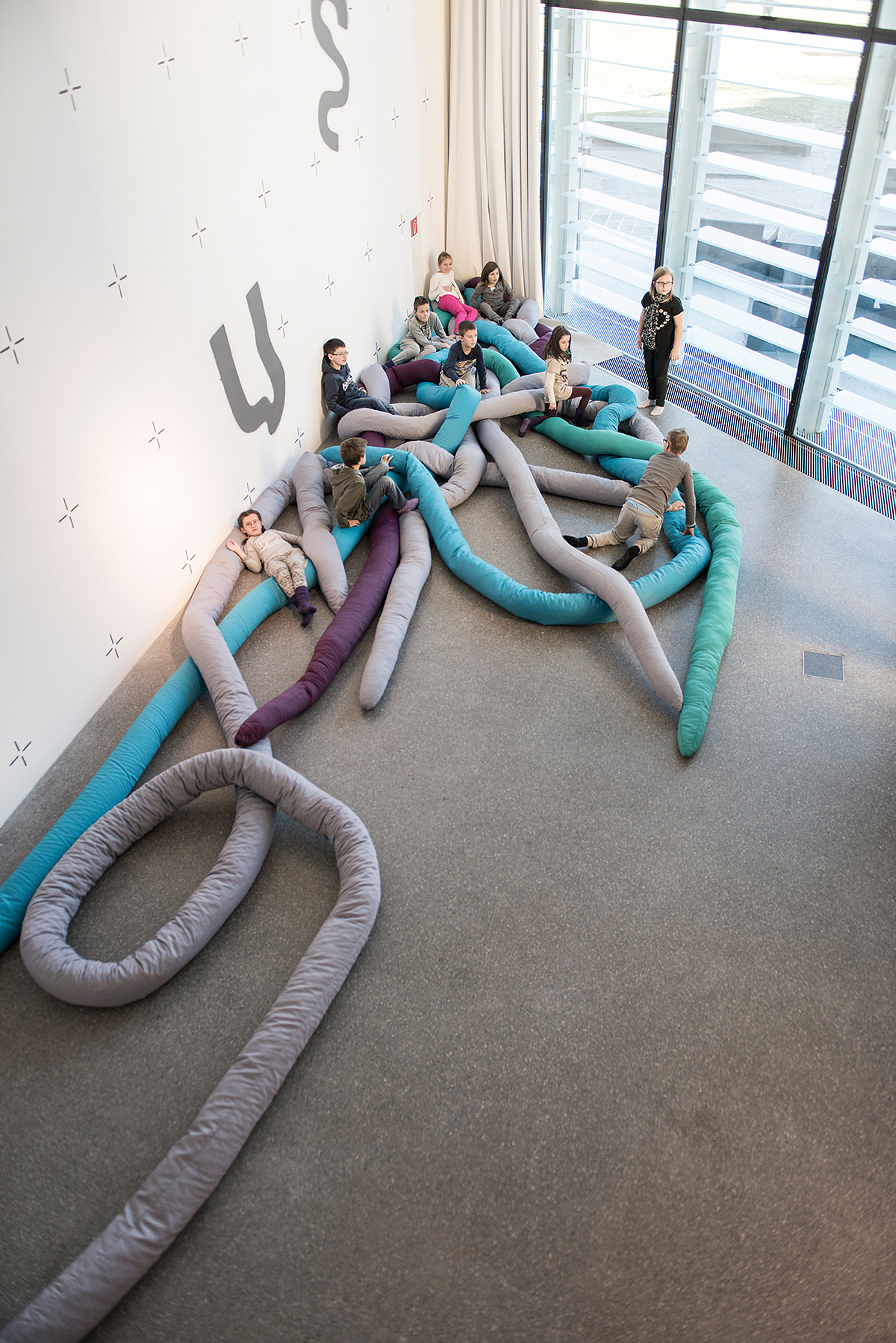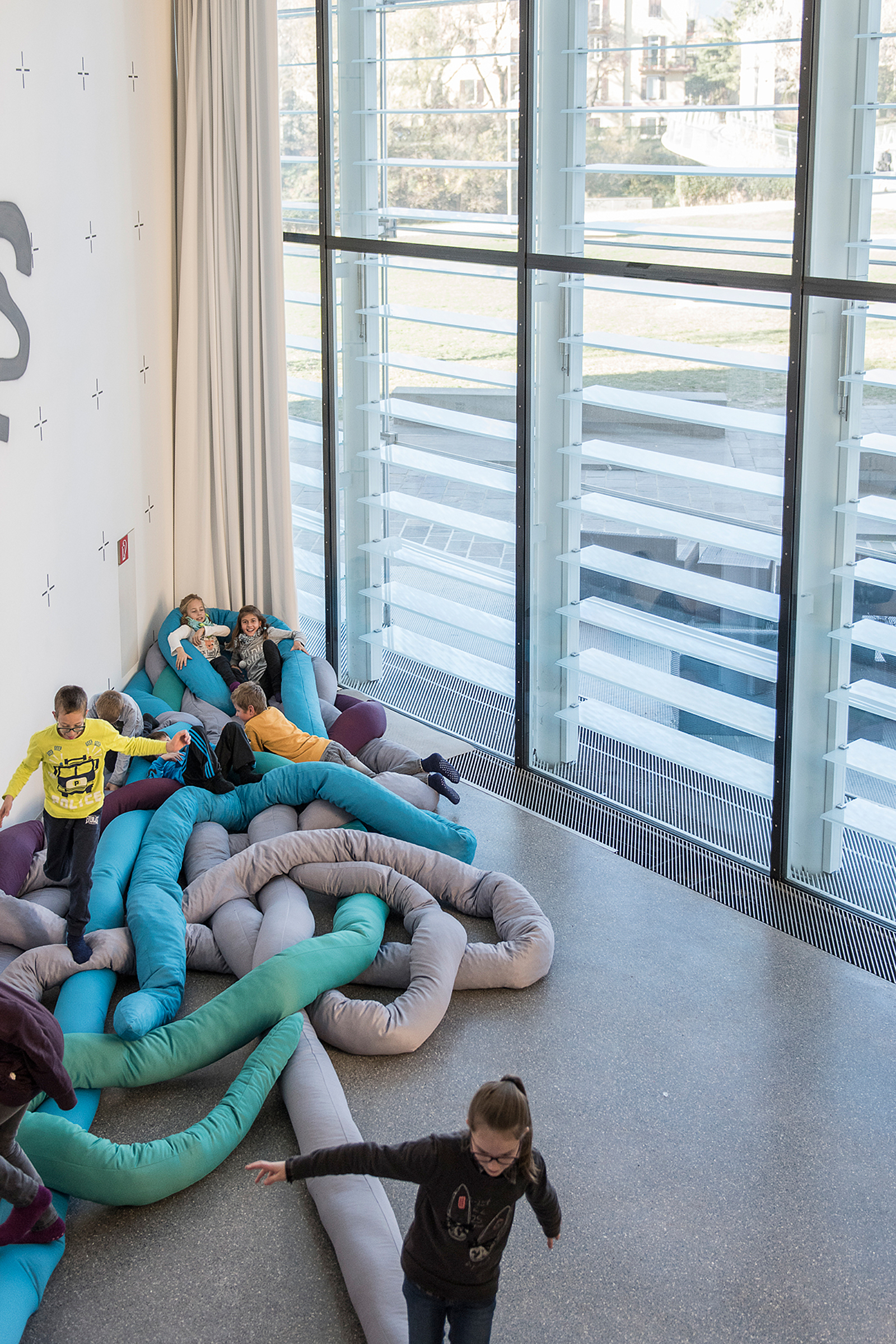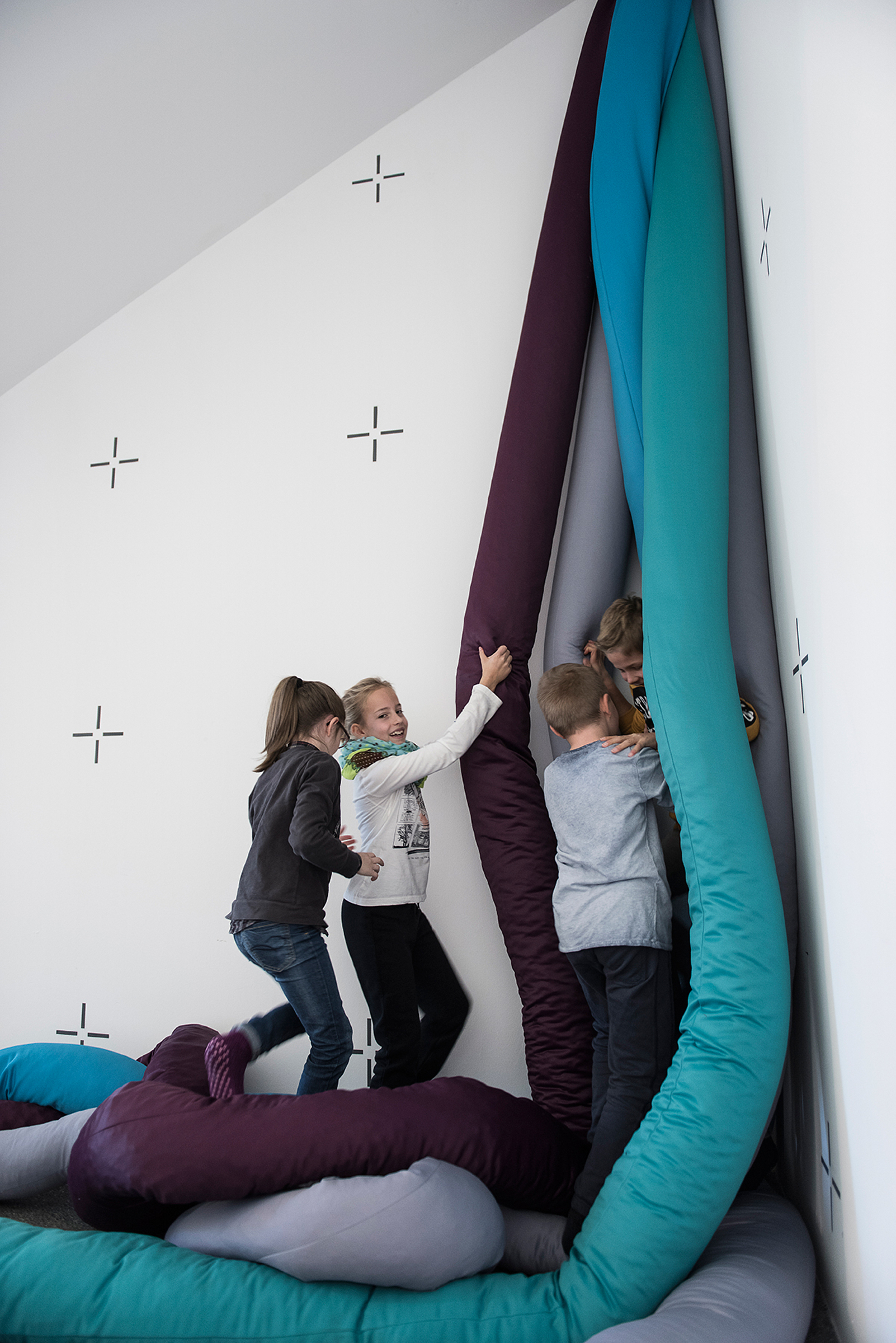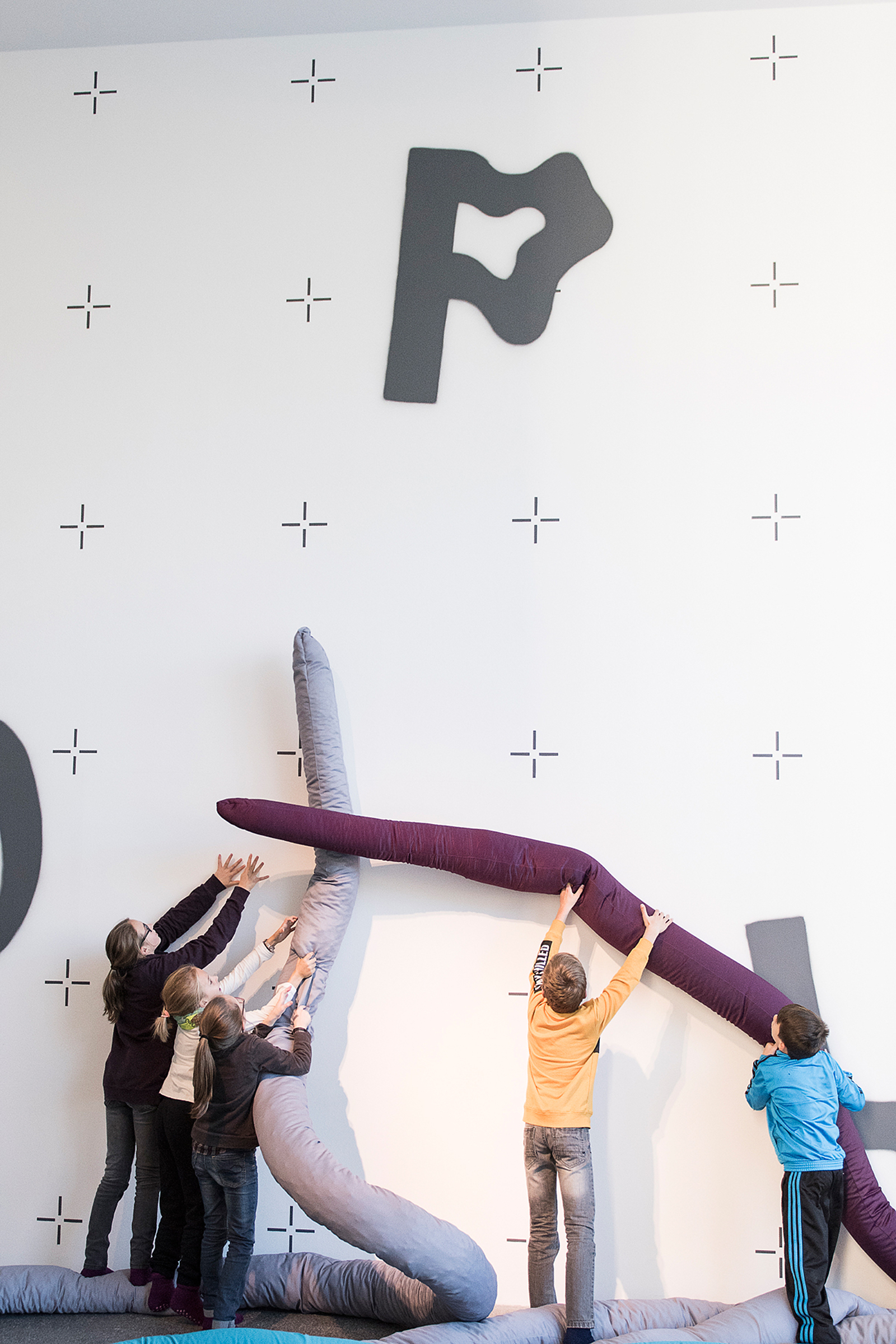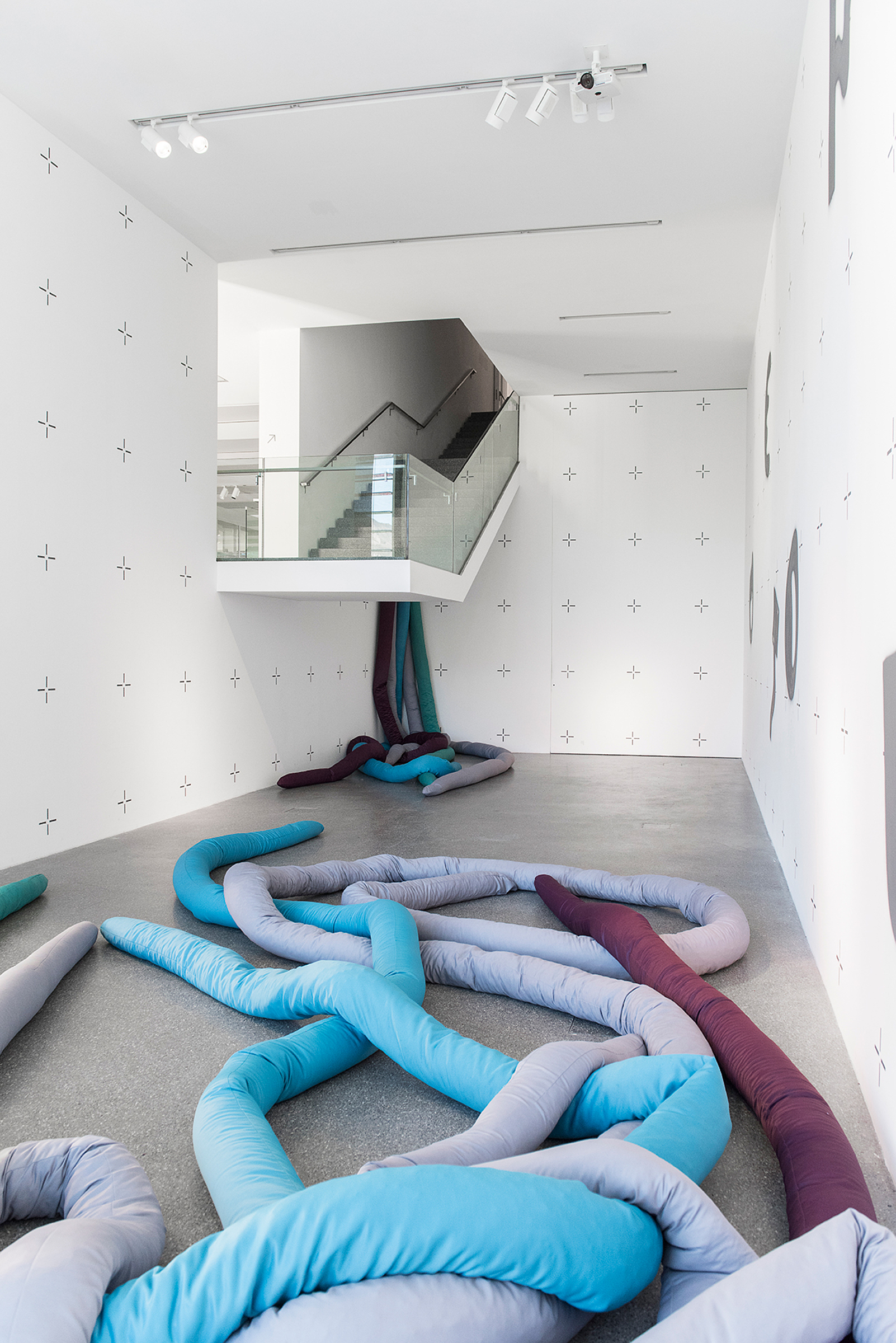Octopus
design dell’esperienza, installazione, design per bambini, design del prodotto
tappeto (7 tentacoli),
cascata (5 tentacoli)
Novembre 2015, MUSEION, Bolzano
Esposizioni:
• Kids Space di MUSEION, Bolzano 11.2015-02.2019
Premi:
• IDA Design Awards – 2nd Place in Interior Design-Institutional, Los Angeles 03.2017
Nel 2015 il Museo di Arte Contemporanea di Bolzano ha deciso di trasformare una sala nel Passage ad ingresso libero, in uno spazio per bambini.
“Può la competenza progettuale dei designer, unita a quelle degli esperti della mediazione, aumentare l’efficacia dei processi di mediazione nell’ambiente museale? Qual è il ruolo dello spazio, della sua percezione e progettazione in tutto questo?”
Per il nuovo kids space abbiamo pensato ad uno spazio come ad un “play space” per i bambini. In questo senso, abbiamo fatto sì che la situazione dello spazio si presenti sempre, a tutti, al punto zero.
Ciò non significa che si tratta di uno spazio immutabile, ma piuttosto di uno spazio in continuo mutamento, che non necessita di un setting predefinito.
Ogni intervento è stato pensato specificatamente in relazione con l’architettura nella quale si inserisce. L’insieme degli interventi crea una narrazione, che prescinde dalla forzatura di un percorso obbligato, ma che è uniforme nel messaggio.
Tocca e muoviti, modifica lo spazio, lascia una traccia. Questo è Octopus!
“The Octopus in Love. Art is an invention to sense the world, not in language but in the senses. The Octopus is the only animal that has three quarters of its brain located in its eight arms. No central nervous system, every leg “thinks” as well as “senses” the world with total autonomy, and yet, is part of the animal. Art is our possibility to imagining a de-centered perception system. Art is the octopus in love. This is a talk about the transformation art operates in our way of conceiving the social and its institutions, as well as about the hope we all have toward the possibility of inventiveness.”
Chuz Martinez
A partire dall’angolo acuto della sala si dirama un tappeto tentacolato. Un fascio di tentacoli attorcigliati e imbottiti si estende nell’intero spazio. I tentacoli si presentano uniformi nell’aspetto, ma all’interno di ognuno si trova un materiale di riempimento diverso, che parla ai sensi dei piccoli ospiti, dando loro la possibilità di provare differenti percezioni tattili.
Il fatto che i tentacoli siano mobili, abilita i bambini a modificare lo spazio e dunque a lasciare una traccia.
Gli stessi tipi di tentacoli sono posizionati anche nell’angolo più alto del sottoscala. Si presentano come una specie di cascata, mobile e tattile. Questi tentacoli si sviluppano in verticale, contrariamente a quelli dell’angolo opposto, che si sviluppano orizzontalmente.
Octopus è un’installazione artistica e pedagogica con cui è piacevole stare a contatto.
Può essere un mezzo per parlare con i bambini dello spazio, dell’arte, dei materiali o anche per riflettere con loro su tematiche complesse, un esempio: la diversità come risorsa.
In 2015 Museion, Bolzano’s Museum of Modern and Contemporary Art, decided to transform a hall of its ground-floor Passage in a space for children.
“Can the design skills of the designers, combined with those of the mediation experts, increase the effectiveness of the mediation processes in the museum environment? What is the role of space, of its perception and design in all this? “
For the new kids space we thought of space as a playground for children. In this sense, we made sure that the spatial arrangement is always perceived by everyone as a “zero point”.
This does not mean that the space is immutable, but rather that it’s constantly changing, and doesn’t require a predefined setting.
Each intervention has been specifically designed in relation to the architecture in which it’s set. Seen together, the different interventions create a story, which carry the same message independently of the path chosen by the kids.
Touch and move, change the space, leave a track. This is Octopus!
“The Octopus in Love. Art is an invention to sense the world, not in language but in the senses. The Octopus is the only animal that has three quarters of its brain located in its eight arms. No central nervous system, every leg “thinks” as well as “senses” the world with total autonomy, and yet, is part of the animal. Art is our possibility to imagining a de-centered perception system. Art is the octopus in love. This is a talk about the transformation art operates in our way of conceiving the social and its institutions, as well as about the hope we all have toward the possibility of inventiveness.”
Chuz Martinez
From the acute angle of the room a tentacled carpet branches off. A bundle of twisted and padded tentacles extends throughout the floor. The tentacles are uniform in appearance, but inside each one there is a different filling material, which stimulates the senses of our little guests, giving them a chance to try different tactile perceptions.
The fact that the tentacles are not fixed enables the children to modify the space and therefore to leave a track.
The same types of tentacles are also placed in the upper corner of the basement. They present themselves as a sort of mobile and tactile waterfall. These tentacles develop vertically, contrary to those of the opposite corner, which develop horizontally.
Octopus is an artistic and pedagogical installation with which it is pleasant to be in contact.
It can be a means to talk with children about space, art, materials or even to reflect with them on complex issues, for example: diversity as a resource.
Credits
“Octopus” è un progetto di M. Naomi Galavotti e Martina Ranedda.
Nato da un’idea di M. Naomi Galavotti, Tommaso Gandini, Anna Martinuzzi, Martina Ranedda e Xenia Trojer.
Coordinamento: EDDES UNIBZ (Roberto Gigliotti) & Museion
Progetto grafico: Jonathan Pierini
Foto: Luca Meneghel
Octopus è stato realizzato grazie al sostegno della Fondazione Cassa di Risparmio di Bolzano.
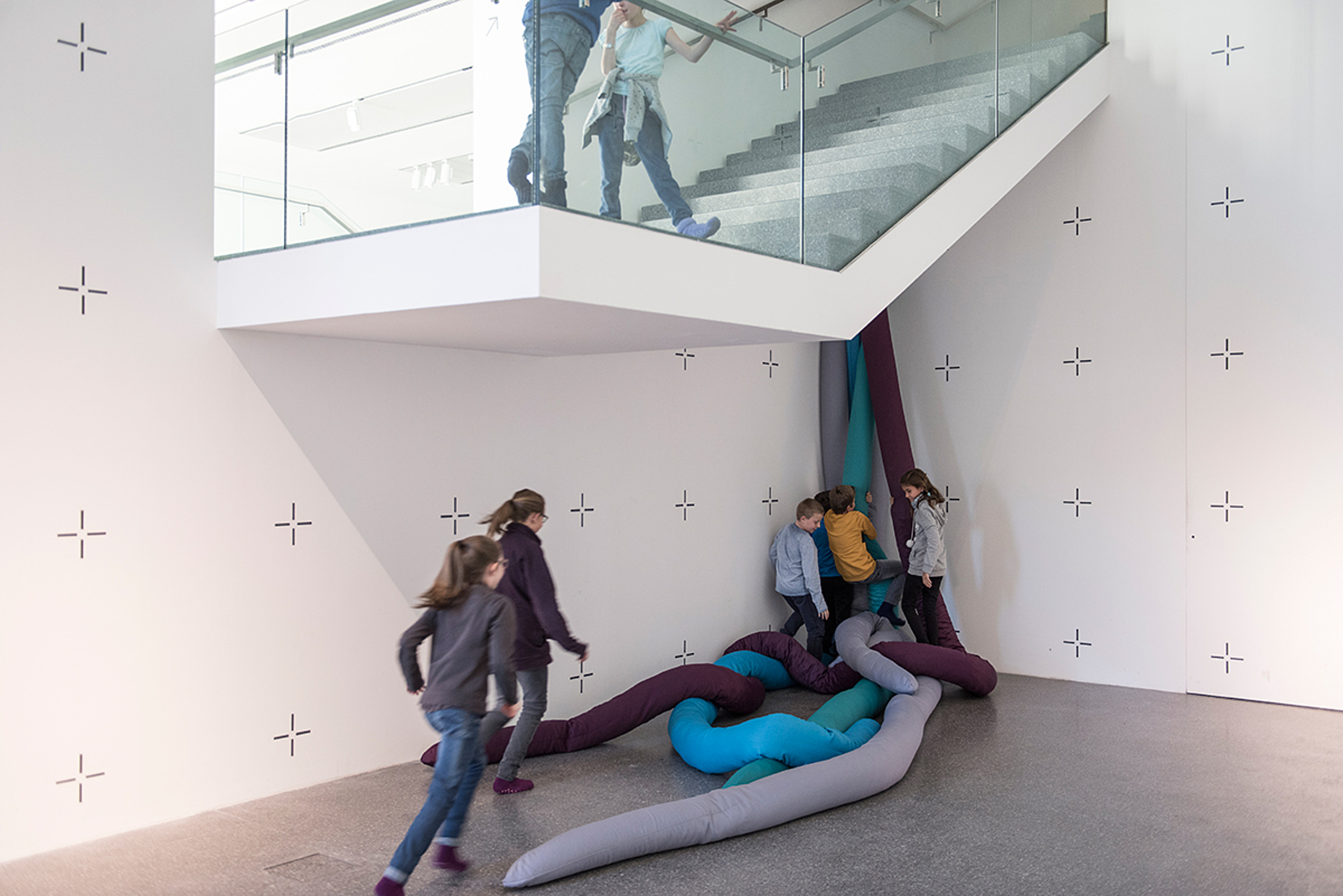
Suggestioni sul tema:
• L. MALAGUZZI, Invece il cento c’è,
da PensieriParole, 1970
• B. MUNARI, Laboratori tattili, Zanichelli, 1985
• The edges of the world by E. NETO, 2010
• Wall-Floor Positions by B. NAUMAN, 1968
• Mur-tableau by V. JOUMARD, 2004
• Colazione in pelliccia by M. OPPENHEIM, 1936

